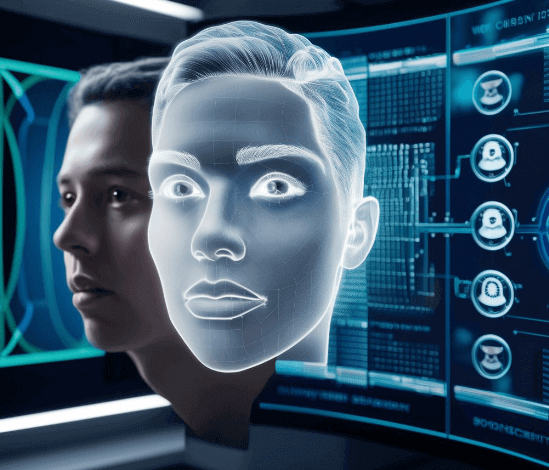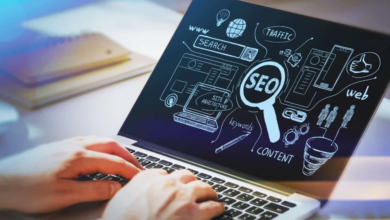Fortifying Security: How 3D Liveness Detection Acts as Shield Against Sophisticated Deepfakes

Undoubtedly, technological innovation has offered incredible applications and streamlined many life aspects, but it has also opened doors for fraudsters. Cybercriminals with malicious intentions spare no avenue unexplored to fulfill their nefarious activities and often they generate digitally manipulated identities to get access to systems. Deepfakes which are digitally fabricated images or videos are often employed by cybercriminals to log into services and conduct illegitimate activities.
Traditional methods of ID verification aren’t sufficient enough to flag spoofed identities, however advanced biometric authentication integrated with liveness detection can play a wonderful role in this arsenal. Liveness detection adds an extra layer of security to the biometric authentication system granting access to genuine individuals only and warding off spoofed attempts.
Understanding 3D Liveness Detection
3D liveness detection generates a three-dimensional image of the individual’s face coming in front of the camera for ID verification by capturing minute details like depth, shape, and texture of the face. Unlike traditional facial recognition that relies on two-dimensional facial images, facial liveness detection goes beyond the surface and analyzes subtle details, offering enhanced security and reducing unauthorized access. This security technique emerges as a defense against the rising threats of AI deepfakes.
The advanced technology captures the face and precisely evaluates details like unique curves of the face including jawline or cheekbones, and subtle details including freckles, blemishes, pores, or wrinkles. The unique facial landmarks such as the depth of the mouth, the shape of the nose, the contour of the jawline, and the distance between the two eyes are accurately extracted and matched against the registered identities to confirm the authenticity.
How Online Liveness Detection Works?
Facial liveness detection technology uses sophisticated depth sensors and liveness checks to give accurate results. Depth sensors are specialized cameras that the technology uses to capture in-depth information about the user’s face. As discussed earlier minute details of facial landmarks are captured and analyzed precisely. Furthermore, liveness checks are conducted to monitor subtle movements like blinking, smiling, or moving the head in certain dimensions.
The most advanced and sophisticated facial liveness detection utilizes techniques like analyzing blood flow patterns in the face or eye movements, which makes the technology a favorable shield against spoofed attempts. As minute details of blood flow patterns, subtle movements, or depth information are hard to mimic by deepfakes, the risks of unauthorized entry into systems are potentially reduced.
Furthermore, challenge-response tests are also conducted to confirm whether the person claiming the identity is alive or not. The users are also asked to make particular actions or movements, which a deepfake can’t perform in real time, confirming the liveness of the claimed identity.
By What Means Facial Liveness Detection Protect Against Deepfakes
Deepfakes are usually generated by using 2D data, lacking the true essence of facial data and can’t mimic humanistic movements. As deepfakes are created by swapping facial images of the targeted individuals, these synthetic identities often fail to replicate or forge the complex details of the facial landmarks and are unable to accurately mimic the texture of real skin. This is where face liveness detection steps, it analyzes all the subtle details and conducts a liveness check to confirm the authenticity of the person.
- Online liveness detection confirms whether the person claiming identity is alive not by evaluating micro-expressions or subtle movements, leaving no room for deepfakes unable to mimic these expressions, to enter into systems.
- During active liveness detection, users are directed to perform specific movements or actions, a live person can actively respond to these queries, however, a deepfake or spoofed identity would struggle to perform such actions in real-time.
- Passive liveness detection doesn’t require users to perform movements but analyzes 70-80 facial landmarks to confirm the authenticity. If the scammer doesn’t what’s the system is evaluating, he won’t be able to mimic or replicate those details, indicating that it’s challenging to evade face liveness detection.
- 3D liveness detection uses depth sensing techniques to evaluate the three-dimensionality of the human face, distinguishing between a real face and a flat manipulated image.
Use Cases of Face Liveness Detection
Due to its accuracy and speed with which facial liveness detection authenticates genuine individuals and flags spoofed identities, it’s extensively employed by various industries globally.
- Access control uses face liveness detection to allow legitimate personnel to enter the buildings and ward off unauthorized access, enhancing security and reducing the threats of fraudulent activities.
- Online liveness detection in financial services ensures secure access to digital banking, and online transactions and restricts illegitimate persons from conducting unauthorized transactions or activities.
- The healthcare sector deploys liveness detection to ensure that medical services are delivered to genuine and deserving individuals.
- Face liveness detection replaces the manual onboarding process and amplifies the KYC process, precisely evaluating users and their activities.
Closing Thoughts
Responsible implementation of online liveness detection can play an increasingly significant role in enhancing security and preserving the integrity of sensitive information from being exploited. In addition, integrating liveness detection with other biometric identifiers like iris or retina patterns can offer a higher level of security in the digital world.





